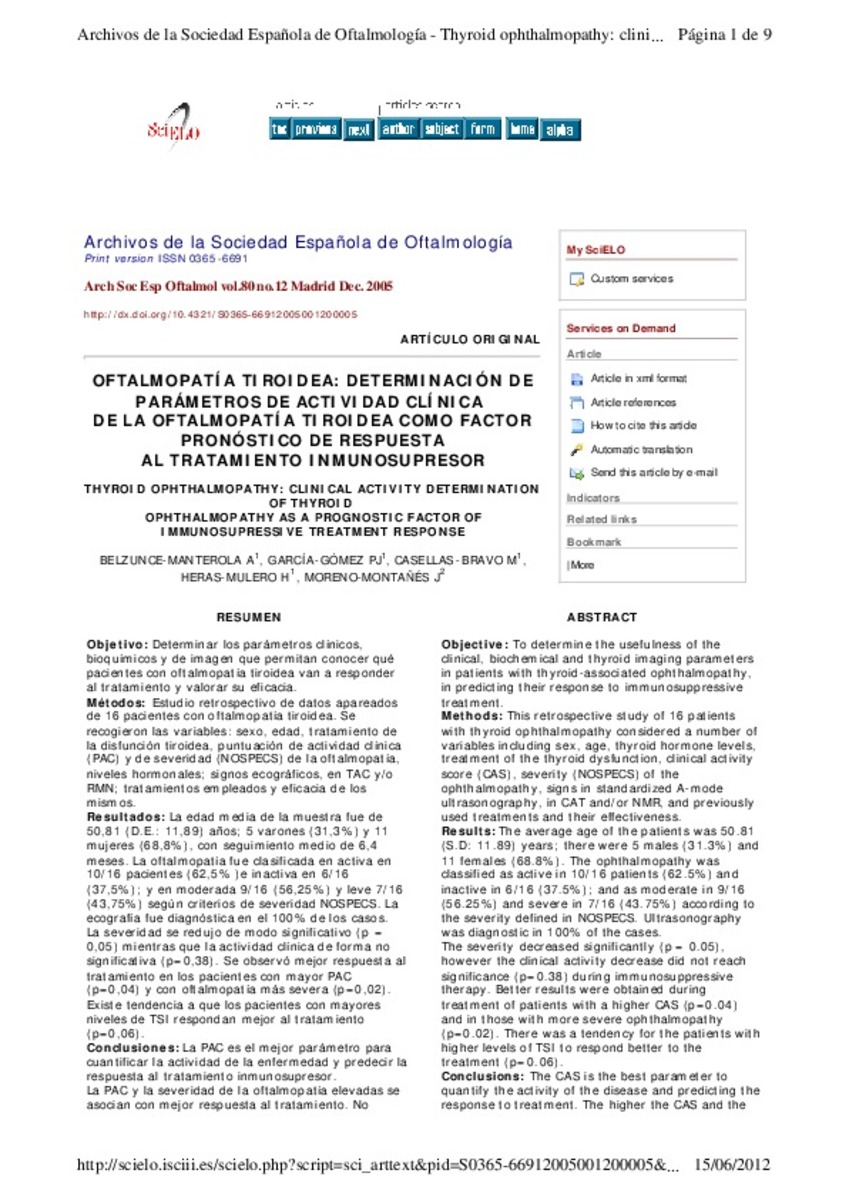Oftalmopatía tiroidea: determinación de parámetros de actividad clínica de la oftalmopatía tiroidea como factor pronóstico de respuesta al tratamiento inmunosupresor
Other Titles:
Thyroid opfthalmopathy: clinical activity determination of thyroid ophthalmopathy as a prognostic factor of immunosupressive treatment response
Keywords:
Thyroid ophthalmopathy
Clinical activity score
Immunosuppressive treatment
Publisher:
Elsevier España
Citation:
Belzunce-Manterola A, Garcia-Gomez PJ, Casellas-Bravo M, Heras-Mulero H, Moreno-Montanes J. Oftalmopatía tiroidea: determinación de parámetros de actividad clínica de la oftalmopatía tiroidea como factor pronóstico de respuesta al tratamiento inmunosupresor. Arch Soc Esp Oftalmol 2005 Dec;80(12):705-712.
Statistics and impact
0 citas en

0 citas en

Items in Dadun are protected by copyright, with all rights reserved, unless otherwise indicated.







